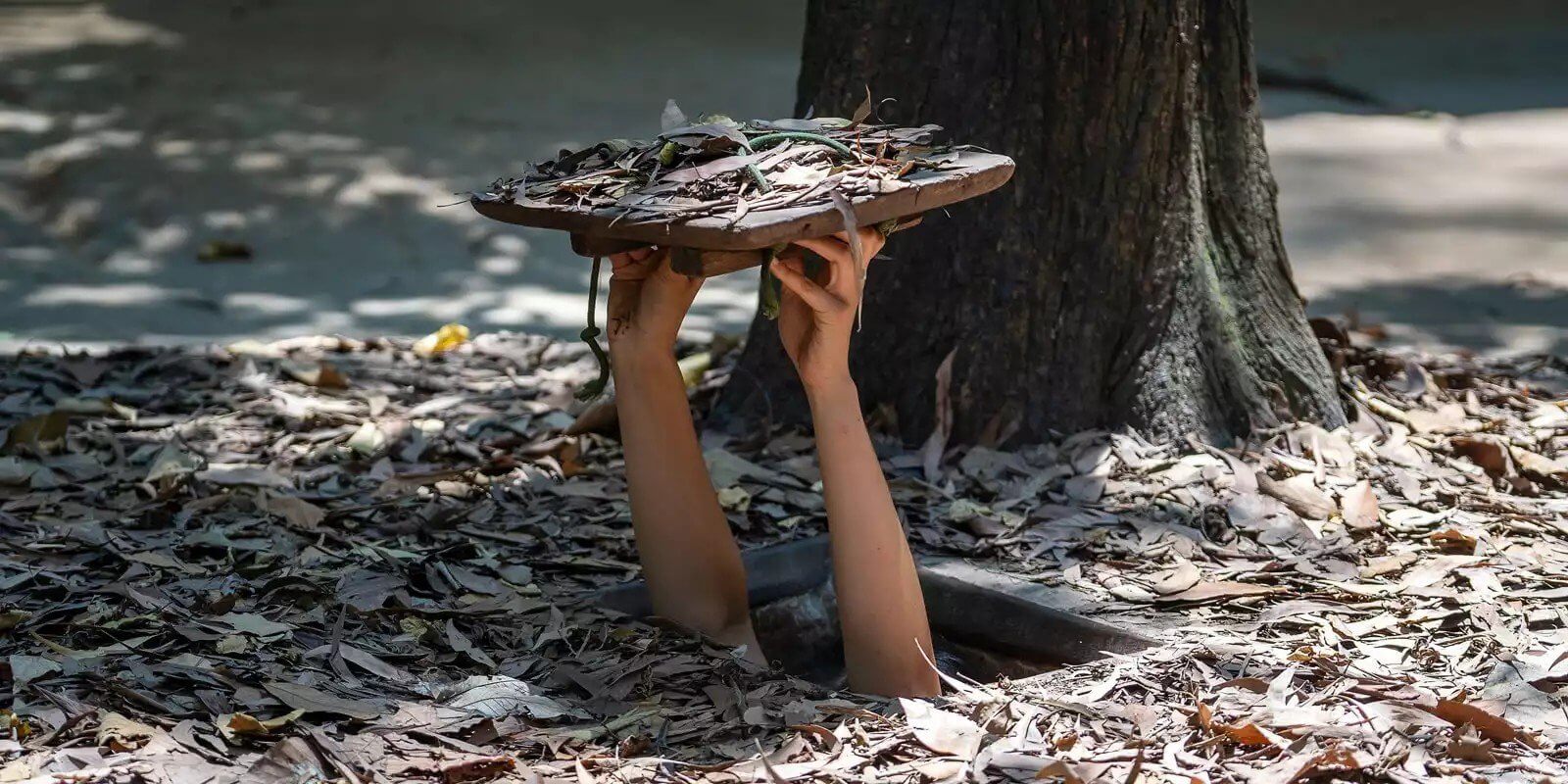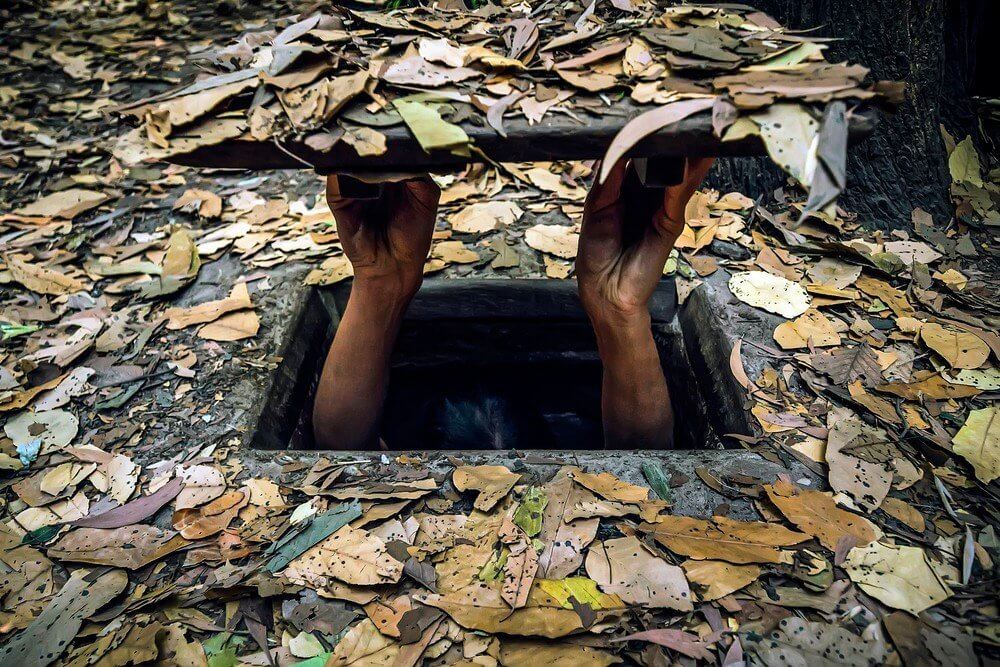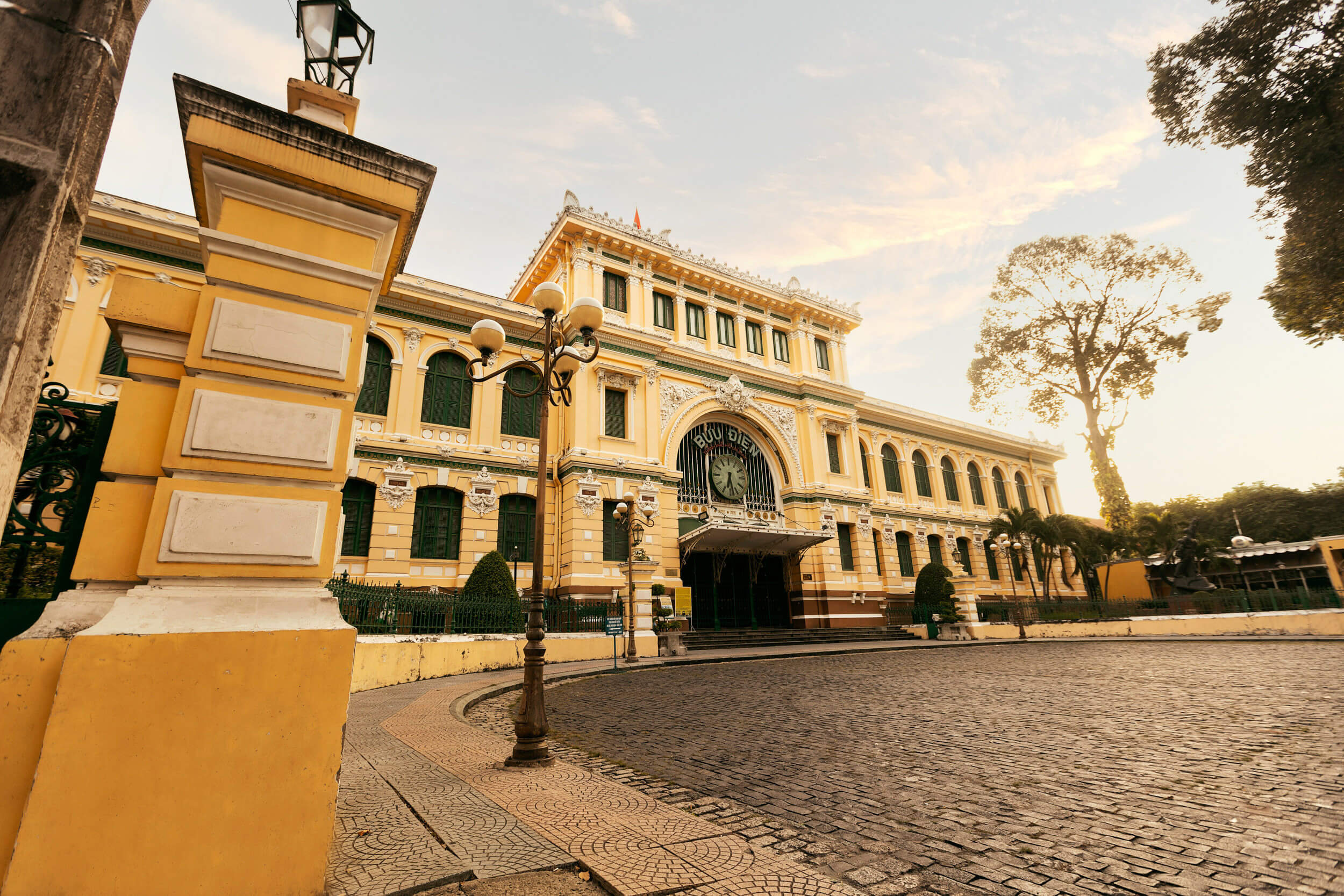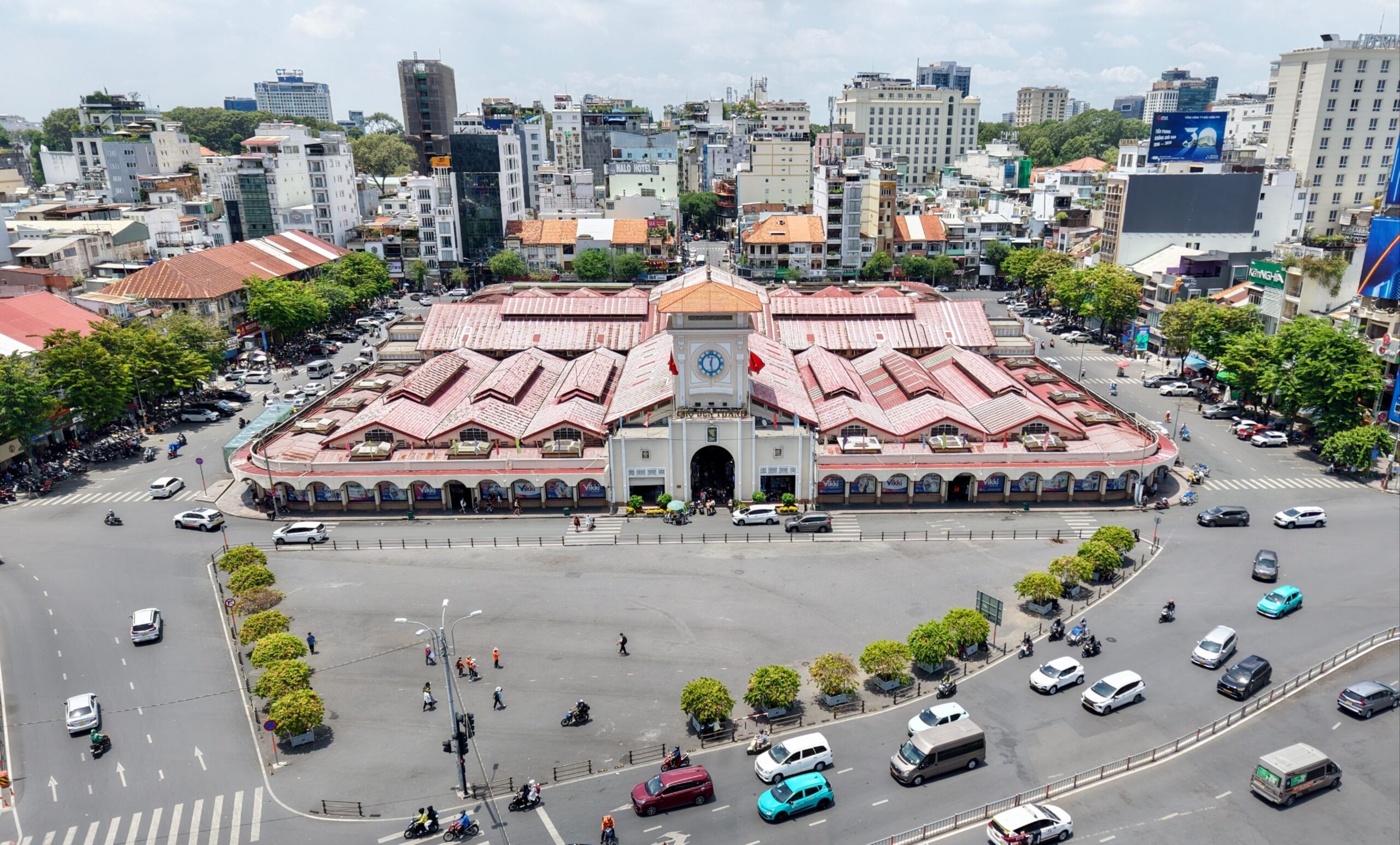
“Snails and Shellfish” – sound weird, taste wonderful
Page Contents
A dozen sauce-streaked plates sit between mounds of empty snail shells on the plastic tabletop; beer cans float on rivulets of melted ice; crusty breadcrumbs fall like snowflakes as hunks of baguette are torn away to mop up the sauces; T-shirts and toes are spattered with tamarind, lime, chilli, coconut and lemongrass; the floor around the plastic chairs is a mosaic of discarded crustaceans: This is the debris of a good night’s an oc – snail eating. Other tables all around tell stories of similar indulgence. It’s Friday night, and all over the country hundreds of thousands of Vietnamese are out enjoying ‘shell tapas’. This is something every traveler and expat should experience.
Many Vietnamese love to eat snails. It’s not only because they are delicious, but I also they are a wonderful social food to share among friends and family.

What is Eating Smails and Shellfish?
Snail eating – is a national pastime in Vietnam. Every day of the week, but particularly on weekends, large groups of work colleagues, friends, and families descend on Snail restaurant to eat, drink and talk the night away. Snail eating is part of drink culture, which is the Vietnamese word for going out, eating, drinking, and socializing on an epic scale. It’s something between tapas and bar culture in the West, but neither of these do justice to the scale of indulgence and conviviality of Vietnamese drinking. There’s a frenetic buzz to snail eating (always accompanied by beer) which is intoxicating and complete.

Snails of all shapes and sizes come from Vietnam’s freshwater sources – flooded rice paddies, rivers, and lakes – and from the ocean – the East Sea and, in the southwest, the Gulf of Thailand. But quán ốc don’t only serve snails: anything that comes in a shell is on the menu. You’ll find clams, oysters, cockles, mussels, scallops, shrimps, and other shellfish you’ve probably never even heard of or seen before. And there’s beer too: sometimes you’ll get draught beer, often brewed on the premises and extremely cheap (and weak), or you’ll find the local favourite of whichever province you happen to be in, as well as local beer.
Snail eating has been around for a long time in Vietnam, and there’s no sign of it diminishing in popularity in these rapidly changing and youthful times for the country. Snail restaurants are usually packed with twenty-somethings digging into shells with tiny forks and wiping sauce from their mouths between bursts of conversation. One reason for the enduring popularity of snails is that they are such great beer food. Snails naturally come in small, bite-sized morsels, and, because you have to negotiate the shell in order to get to the meat, you can’t simply consume a plate in a few mouthfuls. This imposes a nice rhythm and tempo to snail eating that seems to encourage conviviality: pluck one from its shell, chew, swallow, wash it down with a sip of cold beer, have a chat with your friend, and then repeat the process. Peanuts and a pint in a pub don’t come close. Over the course of an evening, you slowly fill up with good food and drink, but never feel bloated.
Snails and shellfish must be among the most ancient forms of ‘meat’ in the human diet since they require minimum hunting skills and present little danger to the hunter. On a recent trip to the island of Phu Quoc, off Vietnam’s southwestern tip, my friend needed only to wade a few meters into the surf and dig her feet a couple of inches under the sand to produce a large sweet snail (a pretty little sea snail with a tabby-patterned shell) wedged between her toes.

Although Vietnam was colonized by another famous snail-eating nation, France, the Vietnamese were feasting on mollusks before the French arrived in southern Vietnam in 1859. In the north-central province of Nghe An, big mounds of discarded snail and shellfish shells have been found dating back some 10,000 years. Even today, as you drive along some of the more deserted strips of Vietnam’s coastline, you’ll see piles of empty shells under trees on beaches where fishermen have snacked in the shade, presumably as they have done for many, many years. Vietnam’s ancient tradition of wet rice cultivation – which some researchers think maybe where this practice began – provides another habitat for snails to live in, and has been a rich source of snails for thousands of years.

How to eat and order
Snail eating is all about sauces and textures. A ‘naked’ snail is a pretty boring, unappetizing prospect, but stuff it with spices and herbs and cover it in all sorts of rich, creamy, juicy sauces and you have a mouthwatering snack. Think of the famous escargot – French snails – which are essentially just a vehicle for garlic and butter. Vietnamese snails offer similarly rich sauces, albeit with regional ingredients and flavors, such as coconut, chili, and lemongrass.
The texture is an essential component of Vietnamese cuisine. Snails can be gooey, chewy, slithery, slimy, or even crunchy. One texture beloved by Vietnamese and common to snails is the ‘chewy-rubbery’ texture. This is something that most westerners will have a hard time getting used to. My advice is to trust the Vietnamese palate: people have been feasting on snails and shellfish here for thousands of years and they’ve gotten good at discerning which ones are the best. There’s usually a good reason why a dish that may seem repulsive to westerners, is beloved by Vietnamese, and (except in the cases where the food’s popularity is based on its supposed virility-inducing qualities or medical benefits) the reason is simply that it’s delicious.
Another big part of the fun of snail-eating is getting dirty: snails are hands-on food. There are techniques for each mollusk – sucking, tearing, cracking, licking, picking, and digging. Although you’ll be provided with utensils – ranging from forks to nut-crackers to safety pins – it’s your fingernails, lips, teeth, and tongue that’ll do most of the work. Within a few minutes, your hands and face will be covered in sauces, and you’ll be waving the waiter over for more wet tissues. Learn to love this mess, as it is part of eating this dish.

Now for the menu. There are so many varieties of snails and shellfish that you’ll constantly be discovering new and delicious ones. The bigger eateries will offer over two dozen types, and even the small vendors boast at least a dozen. Then, there are several ways to have your snails cooked. Add to that the amazing number of sauces, and there’s enough choice to induce serious existential angst when it comes to ordering. However, most Vietnamese people tend to know exactly what they want before they’ve even sat down. Other dishes will be ordered as the night goes on, as the mood takes you, and as you sneak a peek at the interesting-looking crustaceans that arrive on neighboring tables.
You’re faced with three fundamental choices:
1: what type of snail, shellfish or seafood do you want to eat?
2: how do you want it cooked?
3: what sauce/flavours do you want it to be cooked with?
Certain snails and shellfish are almost always ordered cooked in a particular way and with a particular sauce. Below are some examples (with photos and translations) of a few of the most popular (and delicious) combinations:
Water morning glory

To balance everything with some vegetables, Vietnamese always orders a plate of stir fried water morning glory, a vegetable that’s commonly eaten throughout Southeast Asia. This meal was only morning glory fried with big cloves of garlic. It was nice and crisp, and everyone’s favorite part were the seared cloves.
One of the popular Vietnamese methods of cooking snails and shellfish is grilled, then topped with burning scallion oil and scallions, and then sprinkled with chopped peanuts. The nutty flavor of the peanuts would pair very well with the sweet scallops. The scallops were grilled first, so they had a bit of a smokey flavor, and they were then enhanced with fragrant scallion oil, and the bunch of peanuts. It was a sensational combination. I also added a squeeze of lime juice, and some chilies to my scallop, and slurped it down, chasing it with leaves of Vietnamese coriander again.

Mud Creeper sea snails fried in a mild green curry-style coconut sauce
The little snails, after researching them, turned out to be mud creeper, or more officially known as cerithidea obtusa, a seawater mollusk. We suck on the hole of the shell, and out popped a little slimy worm-like snail. It was almost the consistency of an oyster, only long and skinny and a bit slimy. The curry was coconut milk based, on the sweet side, and topped with a handful of rough-cut Vietnamese coriander.

Areola Babylon sea snails fried in chilli and salt
This is some type of Babylonia areolata snail, which was I think dry stir fried in a hot pan, and then coated in a mixture of salt, chili, and lime juice. These snails, unlike the mud creeper snails, were much easier to poke and pull out of their shells. They had a similar texture to squid, slightly rubbery and chew, but with good flavor. The outside seasoning tasted almost like a dry rub marinade, salty, slightly spicy, and a little sour. 
Clams steamed in lemongrass and chilli
Simply infused with aromatics like lemongrass, garlic, and shallots, this clam dish is to be savored with a nice cold glass of beer. This recipe takes 15 minutes to throw together and is the perfect appetizer for warm weather entertaining.

Blood cockles fried in garlic

When blood cockles are combines with Vietnamese mint herb and chili paste will create a fantastic flavor in your mouth, especially in rainy days. Sometime, I made this food at home for party with friends or family. It’s fragrant and savoury, and very easy to keep reaching in for more when the flavours are all so well soaked up.
In addition to the sauces that the snails are cooked in, there are also a number of dipping sauces and accoutrements that ‘shell tapas’ commonly involves. Firstly, there’s the trio of rau răm, muối tiêu chanh and nước mắm, which usually come together on one plate:

Vietnamese mint: These raw, spear-shaped leaves will be the first thing to arrive on your table. Often referred to as Vietnamese Coriander or Hot Mint, they have a spicy-bitter bite to them. Vietnamese food strives for a balance of ‘hot’ and ‘cold’. This refers more to flavour than temperature. It’s the culinary equivalent of the concept of yin and yang. Snails are considered ‘cold’, so they should be balanced with the ‘hot’ flavour of rau răm leaves. I think of rau răm as a ‘chaser’ to neutralize the heavy richness of the snails: after swallowing a meaty, sauce-soaked mollusc, I pop a few leaves in my mouth to rebalance my palate.
Salt pepper lemon: The ubiquitous, simple and delicious accompaniment to all Vietnamese seafood, this is salt (muối), pepper (tiêu) and lime (chanh) mixed together in a little dish for dipping your snails and shellfish in. The sherbety tang of muối tiêu chanh really livens up each mouthful of food, and makes you wonder why you hadn’t thought of it before.


Fish sauce: The national condiment of Vietnam, fish sauce comes in many varieties. With snails you’re most likely to find mixed fish sauce– sweet fish sauce, perhaps with a little chilli and garlic.
Because quán ốc are such informal and open spaces, there’s a constant buzz of vendors (often older women) who walk from table to table offering diners the perfect snacks to go with their ‘shell tapas’. Popular ones include:
Banh mi: French-style baguettes – perfect for soaking up all the sauces.

Banh da: Large, crispy, rice-flour ‘poppadoms’ with sesame seeds – great for texture and very cheap.

Peanuts: Always good finger food, peanuts are sold roasted, salted and crunchy, or boiled and soft.

Tiny, boiled quail eggs: The grey-spotted shells look like Cadbury’s mini chocolate eggs. These are little gems of protein and flavour, and great fun to eat.

Balut: Not one for the unadventurous, this is the infamous fetal duck egg. A fertilized embryo halfway to hatching is boiled and then eaten just as you would a boiled chicken’s egg. It took me a long while to appreciate this snack, but it is (of course) delicious. People all over Southeast Asia love it. Remember to add a tiny teaspoon of muối tiêu chanh into the shell, and definitely ‘chase’ it with some rau răm leaves. If you like eggs then you will, eventually, like fetal duck egg, because it is simply ‘eggier’ than a normal chicken’s egg. An interesting alternative is fetal duck egg de-shelled and fried in sweet-sour tamarind sauce.
Where to eat?
Snail eateries are found in all cities, towns and villages in Vietnam. They run the gamut from gigantic, rave-sized spaces inside corrugated iron hangars filled with a cacophony of
chattering voices, clinking glasses and cracking shells, to intimate two-table street stalls that occupy a quiet corner of a lonely alleyway, under the white glow of a single naked light bulb.

Look for signs saying Quán Ốc or simply Ốc, with a smokey charcoal grill out front next to a display of the day’s snails and shellfish, laid out in plastic baskets and metallic bowls. Snail eating is extremely popular, and Vietnamese are usually very discerning about where they eat: follow the crowds and there’s a good chance you’ll find some tasty molluscs. But don’t dismiss the smaller ones: if a street-side vendor only has two tables, which are both regularly occupied, take that as a sign of quality.

Perhaps more than any other Vietnamese food, snails are all about flavour and atmosphere, not décor. Ambience is created by the quality of the food and the infectious buzz of lots of people thoroughly enjoying themselves, not new furniture and cutting-edge interior design.
Source: vietnamcoracle.com




















